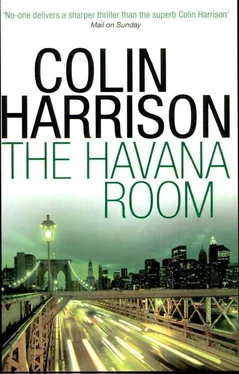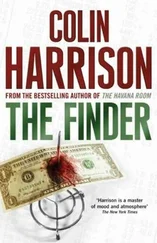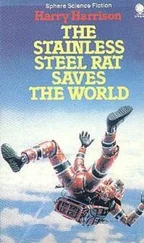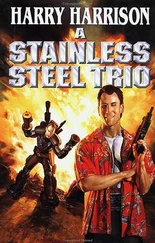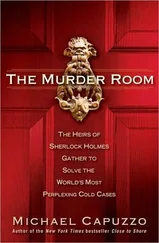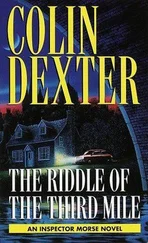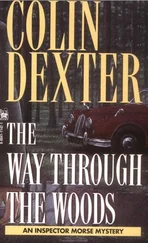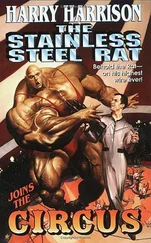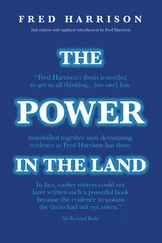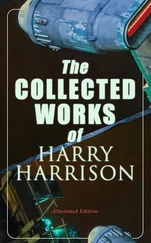Colin Harrison - The Havana Room
Здесь есть возможность читать онлайн «Colin Harrison - The Havana Room» весь текст электронной книги совершенно бесплатно (целиком полную версию без сокращений). В некоторых случаях можно слушать аудио, скачать через торрент в формате fb2 и присутствует краткое содержание. Жанр: Триллер, на английском языке. Описание произведения, (предисловие) а так же отзывы посетителей доступны на портале библиотеки ЛибКат.
- Название:The Havana Room
- Автор:
- Жанр:
- Год:неизвестен
- ISBN:нет данных
- Рейтинг книги:5 / 5. Голосов: 1
-
Избранное:Добавить в избранное
- Отзывы:
-
Ваша оценка:
- 100
- 1
- 2
- 3
- 4
- 5
The Havana Room: краткое содержание, описание и аннотация
Предлагаем к чтению аннотацию, описание, краткое содержание или предисловие (зависит от того, что написал сам автор книги «The Havana Room»). Если вы не нашли необходимую информацию о книге — напишите в комментариях, мы постараемся отыскать её.
The Havana Room — читать онлайн бесплатно полную книгу (весь текст) целиком
Ниже представлен текст книги, разбитый по страницам. Система сохранения места последней прочитанной страницы, позволяет с удобством читать онлайн бесплатно книгу «The Havana Room», без необходимости каждый раз заново искать на чём Вы остановились. Поставьте закладку, и сможете в любой момент перейти на страницу, на которой закончили чтение.
Интервал:
Закладка:
Hidden within this metamorphosis has always been the legal antwork of individual humans and corporations, repeatedly buying, selling, leasing, mortgaging, and reparceling every square inch of the island, and even the rights to the smoggy air above it, in greedy pursuit of their own interests. And although the particulars of that greed- the piled and papered secrets of who owns the island's thirty or forty thousand buildings and how much they paid for them- would seem almost infinite, nearly all are contained within just one place: Room 205, Surro-gate Court, 31 Chambers Street, in lower Manhattan.
And that was where I stood the next morning, outside the court under a threatening sky, stamping my feet and nibbling from a warm bag of caramel peanuts bought from a vendor. The building, erected in 1901, was a magnificent beaux arts pile, with giant bronze Puritans guarding its doors. I'd slept poorly, almost not at all, and when the gray light of day crept down the airshaft next to my window, I'd jolted awake, hoping that the events of the previous night might somehow be remembered as benign. Many mornings I woke in my grimy cell on Thirty-sixth Street hoping in the half-second blink to consciousness that I might discover that I was still living in my eight-room apartment on the Upper East Side, with Timothy asleep in his pajamas and Judith involved in her coffee rituals, available for a cottony, dorsal grope in the kitchen, but on this morning a simple return to my lonely, cracked-plaster innocence of the day before would have filled me with relief, even a kind of refracted happiness.
No such luck. The vision of Herschel's frozen, snow-covered grimace- conjurable and godlike as an Easter Island totem- had chased me along Broadway's snowy, shadowed facades as I'd walked the long blocks toward Chambers Street. You don't move dead bodies, I cursed myself, not in the middle of the night when no one's looking. White lawyers, especially, even ones down on their luck, don't move dead black bodies, no matter how plausible the explanation. And then lie to the cops about it. I could only hope that a few days would go by, Poppy and Jay would smooth over any questions from Herschel's family, the man would be buried in peace, and that would be that. If Jay was smart, he'd pay for the funeral.
And if I was smart, I'd have nothing further to do with him, no matter what Allison might say or promise. The problem was that my name had been hijacked onto his documents of sale, forever and ever, and even as his quickie, one-night-stand lawyer, I was obliged, if only to myself, to see that the deal was sound. Having had no opportunity to examine the documents beforehand, and given the dubious activities of the previous night, I wanted a look at the recorded deeds of the building at 162 Reade Street. The word "recorded" is the key term. A deed has to be executed, tendered, and received, but it's not official until recorded. Only then is the pile of bricks, the box of timbers, possessed. The change in ownership of any property is mysterious, when you think about it; the tangible thing remains unaltered but the description of it, the name attached to it, changes in an instant. Three hundred years ago, under English common law, the sale of real estate used to be marked by the snapping of a stick, which symbolized the specificity and permanence of the moment.
Now the courthouse's brass doors opened and I followed the others up the steps. I'd been to the building years ago, and the place hadn't changed much. Inside, past the posted notices for sheriff's auctions of confiscated cars, you skate across yellowy marbled floors to wide staircases that convey you magnificently into the various rooms of the city's Department of Finance. Here the illusion of grandeur abruptly ceases. Room 205, where paint hangs from the ceiling like peeling sycamore bark, is divided into a records section and an area where those records may be examined on microfiche readers. The room is frequented by two distinct populations: lawyers in good suits and everyone else; the everyone else generally look like drug addicts, drunks, felons, and crazies- the usual shank-shovers and shape-shifters. Derelict as they appear, though, these men and women play a crucial role in the economic life of the city; they are the freelance deed-pullers who work for the title companies and law firms. They know each other in a friendly fuck-you sort of way, and compete for use of the microfiche readers, the computer-record generators, and the attention of the garrulous Russian man who dispenses the microfiche cassettes that are so valuable. (That the definitive records of private property ownership in the capital of global commerce are overseen by a man who grew up under Soviet Communism goes unnoted.) The process is this: You submit the address to the clerk. He gives you the building's block and lot numbers, which are then fed into computers in the adjacent room, which in turn produce mortgage and deed record numbers and their respective microfiche reel and page numbers. This information is resubmitted to the clerk with a small voucher (purchased in the cashier's office down the hall from middle-aged black women discussing their love lives on the taxpayers' time) and the clerk returns a microfiche cassette, which may then be examined, page by blurring page. All help is given grudgingly, and you are under suspicion of stupidity, by definition.
The arcana of the tax stamps on the documents is never explained, but if you know what to look for, which I did, then a wealth of information reveals itself, not least of which is the ever-rocketing value of Manhattan real estate. From the ancient annum of 1697 until April 1983, the great city of New York imposed a real estate transfer tax of $1.10 per thousand dollars of assessed value. In 1983, owing to the booming value of condominiums, the city raised the transfer tax to $4 per thousand of assessed value, which is where it stands today and probably far into the future. Thus could I calculate that 162 Reade Street, the building Jay Rainey had purchased by exchange the night before in the Havana Room, had a value of $9,000 in 1912, $56,000 in 1946, $112,000 in 1964, $212,000 in 1967, $402,000 in 1972, $875,000 in 1988, $1.5 million in 1996, and $2.2 million in 1998, this last the sum paid by an entity calling itself Bongo Partners. Voodoo LLC, the company listed as the owner on the contract for sale the night before, was not on the deed history.
I sat awhile, as irritated as I was confused, and not unaware of the tentacle of legal abstraction quietly encircling my leg. Of course there was a problem with the deed. Why would it be simple or easy? This was a real estate transaction that had started in a steakhouse and ended up with a dead guy on a bulldozer! So screw you, Bill Wyeth! You blew it! So far as the city of New York was concerned, Bongo Partners was- today, right now- the owner of record of 162 Reade Street. If Voodoo LLC was not the legitimate seller, then Jay might have traded his precious oceanfront acreage for nothing- might have been defrauded. And if this was the case, then Jay could easily sue me for malpractice! The title man was supposed to make sure the title was clear, that the property was in fact owned by Voodoo LLC. In the hurry of events I hadn't asked him any questions. Why hadn't he told us that Bongo Partners were the owners of record? I could invent several explanatory scenarios, none of which was reassuring. The irreverence of the names of both corporations was probably connected, of course. Voodoo drums, bongo drums- something like that. I was not free of Jay Rainey, not yet anyway. I copied the records and slipped them into my briefcase.
I was on my way out when I remembered Lipper's claim that his steakhouse had once been owned by Frank Sinatra. Maybe that was true, which would be a smile, as they say, and so, in a mood for distraction, I pulled the deed on the restaurant's West Thirty-third Street address. The provenance of the property constituted a pocket history of New York; as two unimproved lots it had originally been owned by the First Presbyterian Church; fifteen years later the first and narrower lot was sold still unimproved to the Pennsylvania Railroad, which, having train tracks all over that part of town, erected a "below-grade iron-ribbed train shed" on the western edge of the property; this long, narrow rectangle, I realized, constituted the footprint of the Havana Room, and explained why its elevation was so different from that of the steakhouse's first floor. Then, in 1845, the larger lot was sold by the church to an Englishman, who built the first version of the restaurant, a "steaks and ale house," in 1847. He bought the train shed in 1851 and, it appeared, remodeled and connected the structure to his existing building. The merged property changed hands several times in the period 1877-79, perhaps because of the crash that occurred that year, and was merged with an adjacent brownstone to the east in 1921, as the twenties roared and people ate out, and sold again. The transfer tax indicated an enormous leap in value, which suggested to me that three buildings had successfully been remodeled into one and enjoyed great popularity. But not for long; the restaurant had been seized by the city for unpaid taxes during the Depression, then sold soon after. The configuration of the lot had been stable since then and the owners changed once a decade or so from the thirties until the sixties, the restaurant business being as difficult then as it is today, and then settled into a long continuous ownership by an evolving entity: from 1972 until 1984, City Partners, Ltd.; from 1984 until 1988, City Partners from 1988 to the present, City Partners Real Estate Investment Trust- a publicly traded real estate holding company. The ownership of the restaurant could not be more generic, more hohum. Frank Sinatra, the mobster-hangin', whore-bangin', egomaniacal crooner, was nowhere to be found on record. More surprising, neither was Old Man Lipper.
Читать дальшеИнтервал:
Закладка:
Похожие книги на «The Havana Room»
Представляем Вашему вниманию похожие книги на «The Havana Room» списком для выбора. Мы отобрали схожую по названию и смыслу литературу в надежде предоставить читателям больше вариантов отыскать новые, интересные, ещё непрочитанные произведения.
Обсуждение, отзывы о книге «The Havana Room» и просто собственные мнения читателей. Оставьте ваши комментарии, напишите, что Вы думаете о произведении, его смысле или главных героях. Укажите что конкретно понравилось, а что нет, и почему Вы так считаете.
